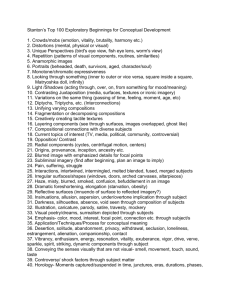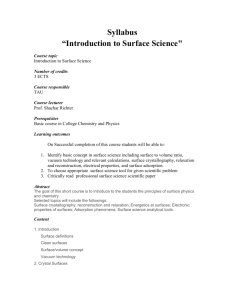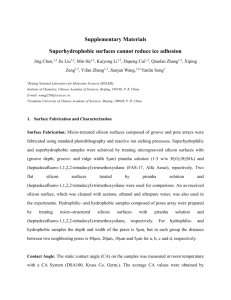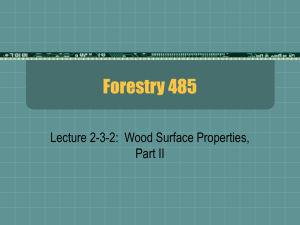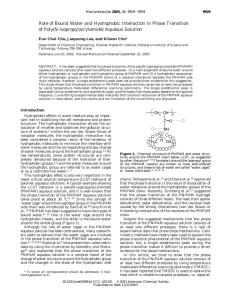Supplemental Table 1
advertisement
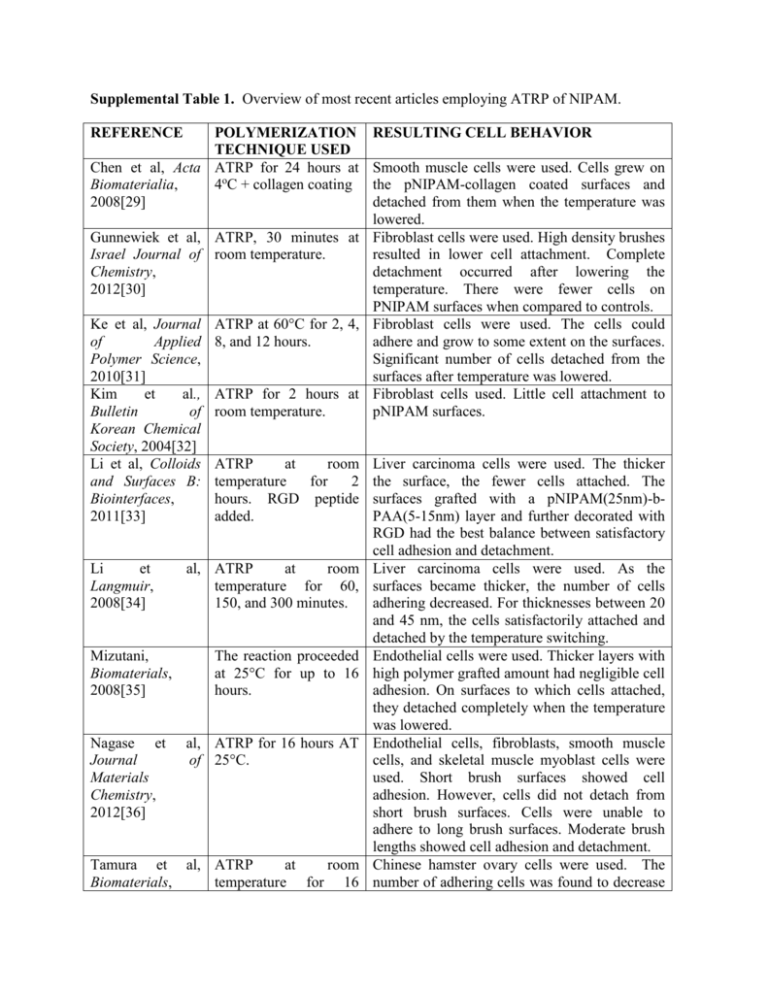
Supplemental Table 1. Overview of most recent articles employing ATRP of NIPAM. REFERENCE POLYMERIZATION RESULTING CELL BEHAVIOR TECHNIQUE USED Chen et al, Acta ATRP for 24 hours at Smooth muscle cells were used. Cells grew on Biomaterialia, 4oC + collagen coating the pNIPAM-collagen coated surfaces and 2008[29] detached from them when the temperature was lowered. Gunnewiek et al, ATRP, 30 minutes at Fibroblast cells were used. High density brushes Israel Journal of room temperature. resulted in lower cell attachment. Complete Chemistry, detachment occurred after lowering the 2012[30] temperature. There were fewer cells on PNIPAM surfaces when compared to controls. Ke et al, Journal ATRP at 60°C for 2, 4, Fibroblast cells were used. The cells could of Applied 8, and 12 hours. adhere and grow to some extent on the surfaces. Polymer Science, Significant number of cells detached from the 2010[31] surfaces after temperature was lowered. Kim et al., ATRP for 2 hours at Fibroblast cells used. Little cell attachment to Bulletin of room temperature. pNIPAM surfaces. Korean Chemical Society, 2004[32] Li et al, Colloids ATRP at room Liver carcinoma cells were used. The thicker and Surfaces B: temperature for 2 the surface, the fewer cells attached. The Biointerfaces, hours. RGD peptide surfaces grafted with a pNIPAM(25nm)-b2011[33] added. PAA(5-15nm) layer and further decorated with RGD had the best balance between satisfactory cell adhesion and detachment. Li et al, ATRP at room Liver carcinoma cells were used. As the Langmuir, temperature for 60, surfaces became thicker, the number of cells 2008[34] 150, and 300 minutes. adhering decreased. For thicknesses between 20 and 45 nm, the cells satisfactorily attached and detached by the temperature switching. Mizutani, The reaction proceeded Endothelial cells were used. Thicker layers with Biomaterials, at 25°C for up to 16 high polymer grafted amount had negligible cell 2008[35] hours. adhesion. On surfaces to which cells attached, they detached completely when the temperature was lowered. Nagase et al, ATRP for 16 hours AT Endothelial cells, fibroblasts, smooth muscle Journal of 25°C. cells, and skeletal muscle myoblast cells were Materials used. Short brush surfaces showed cell Chemistry, adhesion. However, cells did not detach from 2012[36] short brush surfaces. Cells were unable to adhere to long brush surfaces. Moderate brush lengths showed cell adhesion and detachment. Tamura et al, ATRP at room Chinese hamster ovary cells were used. The Biomaterials, temperature for 16 number of adhering cells was found to decrease 2012[37] Sui et Australian Journal Chemistry, 2011[38] hours. al, ATRP for at temperature of minutes. room 30 Xu et al, Colloids and Surfaces B: Biointerfaces, 2011[39] ATRP at room temperature for 0.5 – 2 hours plus collagen coating. Zhang et al, Journal of Biomedical Materials Research B: Applied Biomaterials, 2012[40] Nagase et al., Macromolecular Bioscience, 2011[41] ATRP at 50-55oC for 22 hours. with increasing amount of grafted pNIPAM. Fibroblast cells were used. Lower density brushes had a much higher adhesion with elongated cell morphology, whereas middle and high density brushes displayed progressive decrease of cell density. After decreasing temperature, all cells detached from the lower density brushes. Fibroblast cells were used. Cells attached. The higher the content of the collagen, the higher the density of the attached cells. Cells detached from the surfaces when the temperature was lowered, however, higher contents of the collagen weakened the interaction between the chains and attached cells and hindered complete cell recovery. Fibroblast cells used. Very low cell adhesion and proliferation. ATRP at 25oC for 16 Endothelial cells were used. Dilute pNIPAM hours. brushes showed better cell attachment than dense brushes. Better cell attachment occurred on surfaces with shorter pNIPAM chain length.



